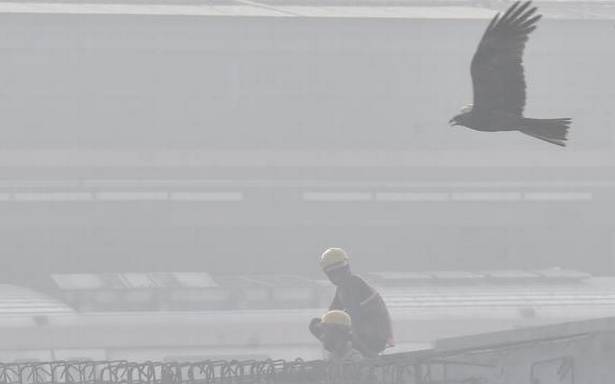Environment Minister says 70% of pollution is caused by sources outside Delhi
The city’s air quality continued to be in the “very poor” category on Thursday and is likely to improve and be in the same range till Saturday.
Environment Minister Gopal Rai said that 70% of pollution in Delhi is caused by pollutants coming from outside the city while the rest is contributed by local sources.
“The report, which the Centre for Science and Environment (CSE) has released after analysing the SAFAR data, matches with The Energy and Resources Institute’s 2016 report, in which it said that 36% was Delhi’s contribution to pollution. This has actually been reduced to just 31% now. The external contribution in the 2016 report was 64%, which has now, according to the CSE report, increased to 69%,” Mr. Rai said.
Mr. Rai also urged the Union Environment Minister to call a joint meeting of all the Environment Ministers of neighbouring States in Delhi-National Capital Region to discuss ways to stop stubble burning.
The Minister said that the Supreme Court on Wednesday had said that the Central Government accepted that at this time, the contribution of stubble burning was 35%-40% to Delhi’s pollution.
“The air quality index (AQI) on Thursday indicates a ‘very poor’ category and is likely to improve but remain the same for the next two days as transport level winds are coming from the east direction preventing intrusion of pollutants from the upwind region. Local surface winds are low and mixing layer height is above one km, resulting in moderate ventilation of near surface pollutants. From November 21, surface winds are likely to be strong, resulting in effective dispersion that improves the air quality,” Government-run monitoring agency SAFAR (System of Air Quality and Weather Forecasting and Research) said in a statement.
On Thursday, the contribution of stubble burning in neighbouring States to PM2.5 (a chief pollutant) in Delhi was negligible and the effective fire counts in the region came down to 773, SAFAR said.
The AQI was 347 on Thursday, down from 375 on Wednesday, as per the Central Pollution Control Board’s 4 p.m. bulletin, which is the average of the past 24 hours.
The air quality in the city entered the “severe” level for the first time this winter on November 5 with an AQI of 462. A higher value of AQI indicates more air pollution.
An AQI between 0 and 50 is considered “good”, 51 and 100 “satisfactory”, 101 and 200 “moderate”, 201 and 300 “poor”, 301 and 400 “very poor”, and 401 and 500 “severe”.
Source: Read Full Article

